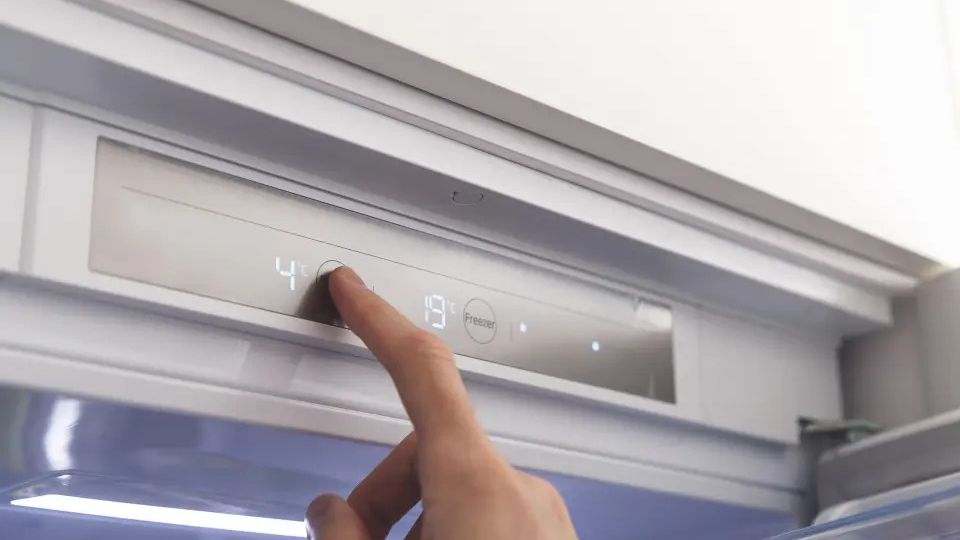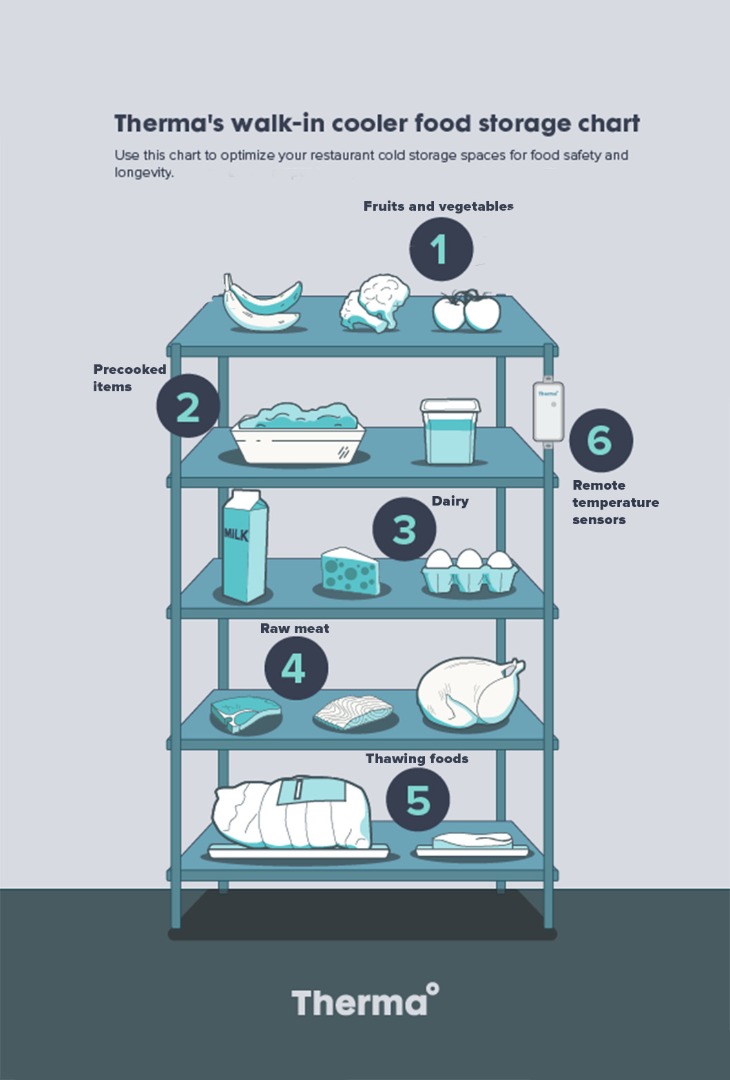
Here's the Right Temperature for Your Refrigerator and Freezer
(Because a Few Degrees Makes a Difference)
The refrigerator is a miracle of modern food preservation. At the right refrigerator temperature, the appliance can keep foods cold and safe to eat for days or weeks by slowing the growth of bacteria. Alternatively, freezers can keep foods fresh and deter bacterial growth for months—or sometimes even indefinitely.
When food temps begin to climb above a certain point, bacteria start to multiply exponentially. Not every one of those bacteria is bad—but not every germ is good, either. For both the quality of your food and to reduce the risk of food poisoning, you’d be wise to keep your fridge cooled to the recommended temperature and follow good refrigerator maintenance guidelines.

What Temperature Should a Refrigerator Be?
The U.S. Food and Drug Administration (FDA) recommends that you keep your refrigerator temperature at or below 40°F and your freezer temperature at or below 0°F. However, the ideal refrigerator temperature is actually lower. Aim to stay between 35° and 38°F (or 1.7 to 3.3°C). This temperature range is as close as you can get to freezing without being so cold that your food will freeze. It’s also as close as the refrigerator temperature should get to the 40°F threshold, at which point bacteria begin multiplying rapidly.
How Does a Refrigerator Work?
Temperatures above the 35° to 38°F zone may be too high, especially if your fridge’s built-in temperate gauge is inaccurate. Your food may spoil quickly, and you could set yourself up for some stomach troubles with bacteria, such as Salmonella and E. coli.
What Temperature Should a Freezer Be?
Generally, it would be best to keep a freezer as close to 0°F as possible, except when you’re adding a lot of new, warmer food. Some freezers have an option for a flash freeze, which will drop the freezer’s temperatures for 24 hours to avoid freezer burn from the temperature variation. You can opt to decrease the freezer temp manually for a few hours, but don’t forget to change it back after. Keeping your freezer at a too cold temperature can run up your utility bill and cause food to lose moisture and flavor. If the freezer has a lot of built-up ice, that’s a sure sign that your freezer temp is too cold.
How to Measure an Accurate Temperature?
Unfortunately, not all fridge temp gauges are accurate. You may have your fridge set to 37°F, but it’s actually keeping temps around 33°F or even 41°F. It’s not uncommon for refrigerators to be a few degrees off the mark you set.
What’s more, some refrigerators don’t display temps at all. They let you adjust the fridge temps on a scale of 1 to 5, with 5 being the warmest option. Without a thermometer, you can’t know what those milestones translate to in real degrees.
You can purchase an inexpensive freestanding appliance thermometer online or at any home store. Place the thermometer in your fridge or freezer and leave it for 20 minutes. Then check the reading. Are you close to the ideal temperature, or even the recommended one?
If not, adjust the fridge temperature accordingly to keep the temps in the safe zone between 35° and 38°F by using the fridge’s temperature control panel. You can do the same in your freezer, aiming to get the temp as close to 0°F as possible.
How to Keep Your Fridge and Freezer Cool
If you find your refrigerator temperature is flirting with the 40°F mark or your freezer is too warm despite your adjusted temperature settings, you can take a few steps to help maintain an ideal temperature.
Let food cool before storing it.
Hot bowls of leftover soup or roast chicken can heat up the small space in your fridge or freezer quickly, putting the foods at jeopardy of rapid bacterial growth. To protect everything inside, let foods cool for a bit (but not to room temperature—that will take too long) before covering and storing.
Check the door seals.
Gaskets around the edge of a refrigerator door keep the cold temps in and the warmer temps out. If there’s a leak in one of those gaskets, your cold air may be escaping. That can make cooling the appliance properly more difficult (and use up more electricity, boosting your monthly electric bill).
Stop opening the door so much.
Every time you open the refrigerator door, you let the cold air out and the warm air in. Resist the temptation to stand at your fridge when you’re hungry, searching for a food that will cure your cravings. Instead, get what you came for, and shut the door quickly.
Keep the fridge and freezer full.
A full fridge is a happy fridge. The same is true for your freezer. The refrigerator temperature can stay cooler longer and keep foods cooled best if the shelves and drawers are mostly full. Just be sure you don’t overcrowd the space and cut down on air flow. That can make moving cooled air difficult and increase the risk of warm pockets of air. Ideally, leave around 20 percent of the space open. (A little refrigerator organization can help with that, too.)

Best Practices for Storing Chilled Good
Precooked items
The best storage location for fruits, vegetables, and herbs is on the highest shelf in your walk-in. In general, produce contains less dangerous bacteria compared to meat and dairy. Therefore, if excess condensation from produce drips on other items within the fridge, it is less hazardous.
Precooked items
You should store precooked and saved items on the shelf below produce in an optimal situation. Saved items have reached an internal temperature exceeding 145°F, killing bacteria that could be hazardous if dripped to other foods below. However, mitigate dripping whenever possible. Though it may not be dangerous from a safety perspective, it may decrease the quality of the items stored underneath.
It is important to note that proper wrapping techniques, specifically the catering method, should prevent associated liquids from leaking. Recently cooked items still releasing steam should not be wrapped and placed on this shelf. Instead, store these items unwrapped on a speed rack in cold storage until they are at room temperature.
Dairy
The best place to store dairies such as eggs, milk, and cheese is below precooked items. Dairy has slightly more potential for bacterial contamination than produce or stored items. In general, so long as it is holding at a temperature under 40°F, dairy should not risk the items stored below it. Like with all foods stored in the walk-in, there is some chance of exposure to warmer temperatures when stored near the door. Warm air tends to enter a walk-in due to the rapid opening of the doors during service. To ensure you aren’t exposing dairy to higher temperatures, ensure that the more sensitive the dairy item is, the further back it is stored.
Raw meat
Below dairy is an optimal place to store raw meats. Raw meat includes fish, poultry, pork, and red meat, either fresh or already thawed. Liquids from meats are rich in bacteria and can be extremely hazardous if consumed. Ultimately, excess condensation distributed onto other items can spread food-borne illnesses such as salmonella.
Thawing items
The bottom shelf of the walk-in should be devoted to defrosting meats. Defrosting meats have an increased risk of contaminating food, as they contain bacteria, and defrosting creates excess liquid and drip risks.
Use Therma° to monitor storage temperatures
To ensure food safety, implement remote monitoring technology such as Therma° to consistently monitor food temperature. During the hectic pace of service, the rapid opening, closing, and propping of doors can create wild temperature variations. These prevalences will often go unnoticed, as busy services provide little extra time to perform temperature checks. Unfortunately, no matter how well organized your walk-in is, storage that exceeds 40°F for over 2 hours can render all of your cold inventory unsafe to serve. Remote temperature monitoring in combination with proper walk-in organization prevents contamination both from temperature excursions and cross-contamination.



